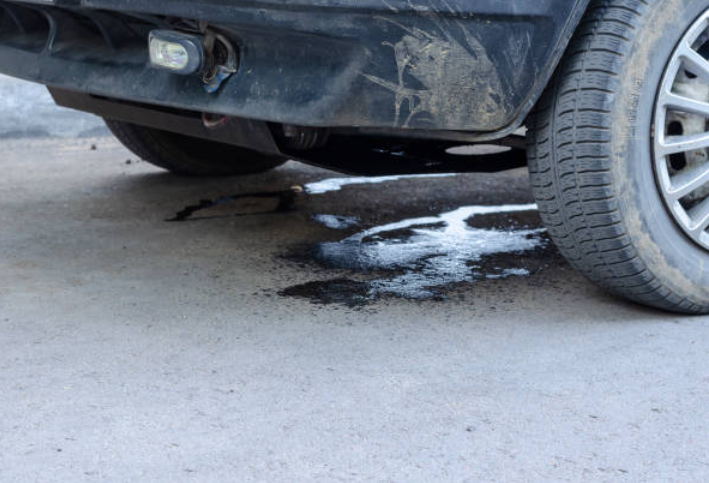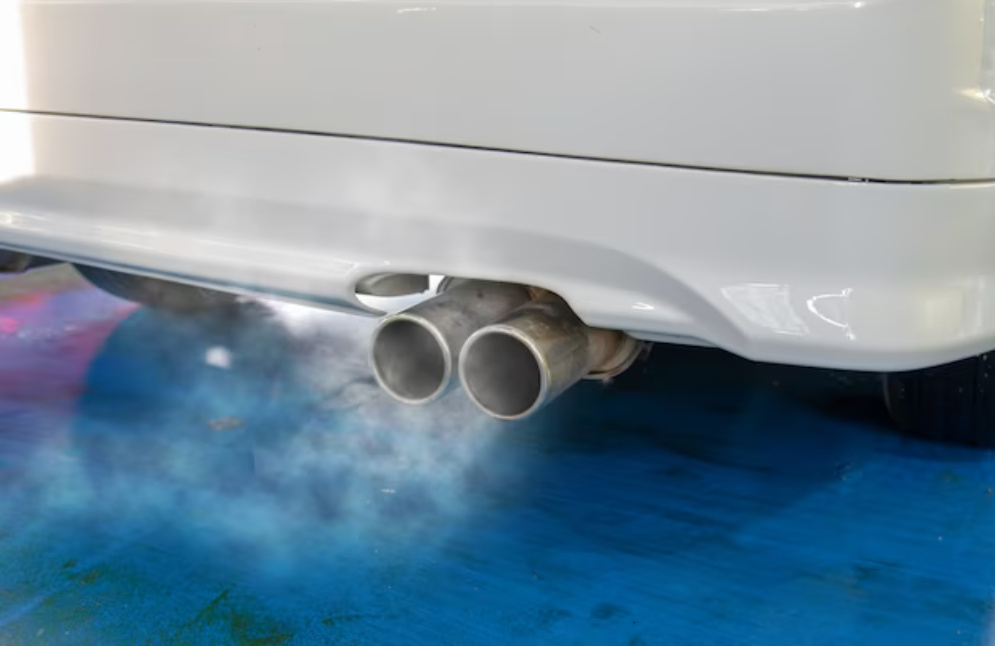When To Change Spark Plugs?
Internal combustion engines still depend on electricity, especially through spark plugs, to ignite the fuel-air mixture, even as the automobile industry continues to shift toward electric vehicles. Maintaining optimal performance and minimizing engine faults require regular maintenance and the replacement of spark plugs. Nonetheless, the car owner must be watchful and aware of when to service them, which emphasizes the significance of routine maintenance and the identification of any symptoms that point to possible spark plug problems. Keep reading this blog post to know exactly when you should change spark plugs.

What Exactly Is A Spark Plug, Why Is It Crucial To Consider Its Replacement?
A spark plug serves as a compact engine component, nestled within the cylinder, tasked with initiating combustion by creating a spark through a connection from the battery. The number of spark plugs in an engine aligns with the cylinder count, with configurations such as four plugs for an inline-four or eight for a V8 engine. For enhanced ignition precision, some vehicles may even incorporate two spark plugs per cylinder.

Spark plugs, which are made of a mixture of copper, nickel, iridium, and platinum and have ceramic insulation, are essential to engine performance. But with time, rust or deposit buildup reduces their effectiveness. If this problem is not fixed, engine efficiency and performance may be negatively impacted, possibly resulting in less cylinder operation.
A spark plug functions by generating a controlled surge of high-voltage electricity across a precisely defined gap between a central electrode and a ground electrode. This spark initiates within the cylinder and triggers the combustion of the air and fuel mixture. Consequently, the resulting explosion propels the piston downward within the cylinder.
When a vehicle's spark plugs are fouled, incorrectly spaced, or malfunctioning, it may display several symptoms of poor performance. Visual inspection of the spark plugs can provide important cues indicating the need for replacement.

Difficulty starting or failure to start: This issue commonly arises when multiple spark plugs require replacement. If the car struggles or refuses to start, especially due to faulty spark plugs, it's a clear sign that a new set is overdue.
Rough idling: Even a single faulty spark plug can disrupt the smooth operation of the engine at idle.
Engine knocking or pinging: When the engine is running, there are audible indications that this may be related to spark plug issues. These signals become more noticeable when the engine is running.
Reduced fuel efficiency: It seems sense to look into the spark plugs if the car's fuel efficiency noticeably drops.
Decreased performance: Slow acceleration, especially when climbing hills or traveling at high speeds on the freeway, may be a sign of spark plug problems.
Visual cues: Observing how the spark plugs look provides important details. It is time to change the plugs if they seem unclean, discolored, have a noticeable space between the electrode and body, are cracked, or seem oily.
Grounding Test:
- Cut Off gasoline Supply: Turn off the engine's gasoline supply. In vehicles that employ fuel injection, take off the fuel pump fuse. When operating a carbureted engine, cut off the fuel pump's pipework and run the engine until all of the fuel has been burnt.
- Spark Plug Wire/Coil Pack Removal: Carefully separate the spark plug wire from the coil pack or loosen the coil pack's mounting bolt. Spark plug pliers make this task easier.
- Extract the spark plug from the cylinder head in order to remove it.
- Attach Spark Plug to Wire/Coil Pack: Attach the spark plug to the coil pack or plug wire once more.
- Ground the Spark Plug: Place the spark plug on a grounded metal surface, ensuring it's away from fuel sources and clear of moving parts to avoid accidents.
- Crank the ignition: Have someone turn the ignition while you inspect the spark plug. Verify that the spark is strong and appears blue in color. A weak, dull orange spark may indicate insufficient ignition power to ignite the air-fuel mixture.
- (Optional) Test with a New Plug: If there is no spark or the spark remains weak, connect a new or known working plug to the coil pack or spark plug wire and repeat the test. If the spark is present with the new plug, it confirms the old spark plug's malfunction. If not, further troubleshooting of other ignition system components may be necessary. Additionally, a multimeter test can provide further confirmation of a faulty plug.

Multimeter Testing Procedure for Spark Plugs:
- Follow the preparatory steps: Begin by completing Steps 1–3 from the previous method to ensure the spark plug is ready for testing.
- Set the Multimeter to Measure Resistance: Configure the multimeter to measure resistance, commonly denoted as ohms.
- Ensure Probe Calibration: Before testing, verify that the multimeter probes exhibit no resistance themselves to ensure accurate readings.
- Perform a resistance test: touch one multimeter probe to the terminal located at the end of the spark plug, and the other probe to the center electrode.
- Interpret the reading: Examine the multimeter display to determine the resistance value. The acceptable range of resistance varies depending on the manufacturer's specifications. Typically, readings falling between 4,000 and 8,000 ohms are considered within an acceptable range. However, precise adherence to the manufacturer's guidelines is crucial for an accurate assessment.
Preliminary Steps:
- To avoid any electrical accidents, start by unplugging the battery's negative terminal.
- Remove any protective covers that are preventing you from accessing the spark plugs, if applicable.
- Use a vacuum or compressed air to thoroughly clean the surrounding region so that the engine is not contaminated by debris.
Removal Procedure:
- To preserve the engine's firing order, carefully remove each spark plug boot one at a time while labeling them precisely.
- Check all of the spark plugs carefully for wear indicators like debris, accumulation, or damage.

Examination of Spark Plugs:
- Scrutinize the spark plugs for telltale signs of potential issues, including carbon buildup, oil residue, or fuel deposits.
- Assess the condition of the center electrode, ensuring it remains uniform and intact. Consider replacement if discrepancies are noted, regardless of the apparent condition.
Cleaning Procedure (Optional):
- If desired, delicately cleanse the spark plugs using a non-metallic brush and an appropriate cleaner, ensuring they are completely dry before reinstallation. Abrasive methods such as sandblasting should be avoided.
Installation of New Spark Plugs:
- Confirm the gap measurement of the new spark plugs, making adjustments if necessary.
- Utilize a plug starter or socket extension to cautiously thread the new spark plugs into their designated locations, taking care to avoid cross-threading or excessive tightening.
- Reference the vehicle's torque specifications to securely fasten the spark plugs using a torque wrench.
- Reattach the spark plug boots to their respective plugs, maintaining the previously established labeling for correct placement.
Finalization:
- Restore power by reconnecting the negative terminal of the battery, completing the replacement process.
What is the typical cost of changing spark plugs?
For most consumer vehicles, the price range for a single spark plug falls between $2 and $20. However, if you're swapping plugs on a used Bugatti Veyron, expect to shell out a bit more.
How often do spark plugs need to be changed?
As a simple rule of thumb, think about replacing the spark plugs every 30,000 miles. Remember that, depending on a number of conditions, they can fail sooner or last longer.
Is it best to replace every spark plug at once?
Yes, in order to maintain consistent performance across all cylinders, it is normally advised to replace all of the spark plugs at once. When it comes to garage maintenance, consistency is everything.
What happens if you do not replace your spark plugs?
Operating a car with failing spark plugs can lead to reduced efficiency, misfires, poor performance, or even the inability to start the vehicle. In extreme circumstances, it can expedite engine deterioration.
In summary, spark plugs remain integral to internal combustion engines despite the electric vehicle trend. Regular maintenance and timely replacement are crucial for optimal engine performance. Recognizing signs of spark plug issues and conducting inspections are vital for vehicle owners. Crafted with precision from materials like copper and platinum, spark plugs facilitate combustion. Symptoms such as difficulty starting or rough idling indicate the need for a replacement. Following testing and replacement guides ensures systematic maintenance. Understanding the costs, frequency, and consequences of neglect empowers proactive vehicle care.
Click on the following link to readf another blog post: How To Troubleshoot The Ignition System?















